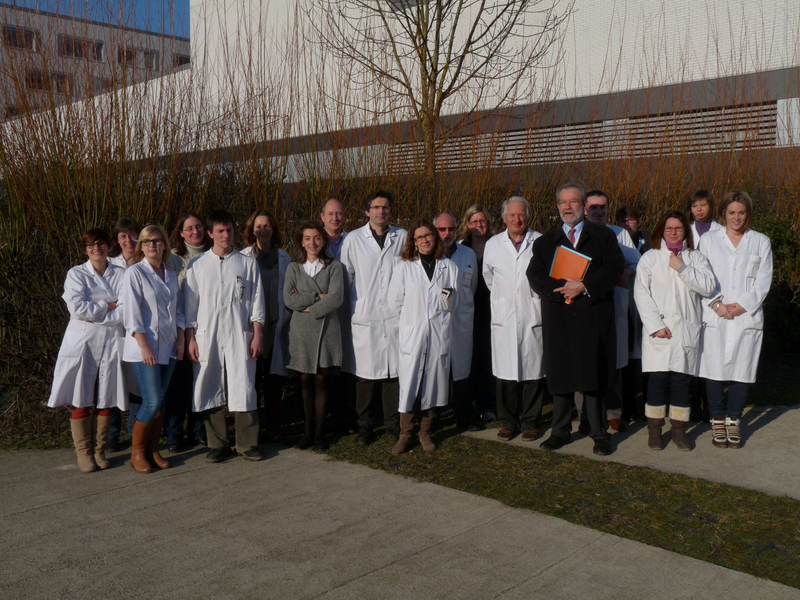Our research unit, under the joint supervision of the University of Reims Champagne-Ardenne (URCA) and the CNRS (UMR CNRS / URCA No. 7369), directed by Pr Maquart, was created in January 2008 by a merger of two pre-existing research units. It has the peculiarity to be fully transdisciplinary since it associates biologists, biophysicists, computer scientists, physical chemists and clinicians for a transversal approach of biological phenomena. Our research is totally focused on an interdisciplinary postgenomics approach of the interactions between cells and extracellular matrix, applied to the modulation of tumor growth and to the phenomena of matrix extracellular aging, a "niche" for the development of degenerative diseases, especially in the arterial wall. Regarding the modulation of tumor progression, we focus on the role of extracellular matrix remodeling by proteolytic enzymes, especially Matrix Metalloproteinases (MMPs) and their specific inhibitors, TIMPs ("Tissue Inhibitors of Metallo-Proteinases"), and endocytosis receptor LRP-1 ("Low-density lipoprotein receptor-related protein-1"). This remodeling of the extracellular matrix by proteinases is a phenomenon essential for the invasion of the tissue surrounding the tumor by cancer cells. It is also able to generate the release of peptides called “matrikines” that regulate many cell functions and realize a true extracellular "signalome". Using several in vivo and in vitro models, we study the mechanisms involved in these phenomena and their involvement in the control of tumor progression.
Team 1: Proteolysis and Cancer - Stéphane Brezillon and Hervé Emonard

Team 3: Cellular Biophotonics - Pr Piot, Pr Jeannesson, Pr Sockalingum
Via the matrix molecules, the tumor microenvironment plays a pivotal role in tumor progression and drug resistance. In this context, our project aims at studying the flow of information at different levels, and their integration, generated by the cell membrane, the cytoskeleton, and the nucleus as a function of the matrix microenvironment configuration and presence of anti-tumor agents. Our approach relies on the use of multiscale and multimodal approaches developed in our group since several years. They concern imaging techniques based of fluorescence correlation spectroscopy, two-photon confocal microscopy, Raman and infrared (conventional and synchrotron-based) microspectroscopies, and electronic spectroscopy (cryo-analytical electron microscopy).

